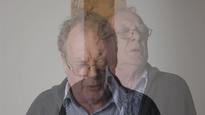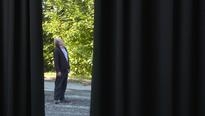MYRIAM VAN IMSCHOOT
Myriam Van Imschoot is an artist active in performance, film, sound poetry and public space. The voice is one of the main vehicles for her work, which she pairs with an awareness of the politicized potential of listening, the ecology of sound, and the changing regimes of audibility in society. Van Imschoot is drawn to anachronism, vernacular customs, traditional extended vocal techniques and folklore as capsules of experience and knowledge that propose different temporalities and can point to cracks in the modern 'western' narrative of linear progress. Overall she is concerned with experimenting with alternative forms of sociability, collective process and intersubjectivities.
Her work is nationally and internationally produced and presented in theaters, galleries and musea, like Sculpture International Rotterdam, Nodar Binaural Sound Center, Rumpsti-Pumsti (Musik), Hau in Berlin, MUU Galeria and Kiasma in Helsinki, Playground Stuk in Leuven, Kaaitheater in Brussels, Vooruit and Campo in Gent, Kunstencentrum Buda in Kortrijk, Pact Zollverein, Actoral, Mucem and Friche La Belle de Mai in Marseille, Kunsthal Extra City in Antwerp, De Brakke Grond in Amsterdam, Onarte in Locarno, etc. She received several grants and residency scholarships by the Flemish Government, Flemish Communitiy Commission, Akademie Schloss Solitude, Jan Van Eyck Academie, and Medien- und Filmgesellschaft Baden-Württemberg.
Since 2008 the cinematographic work of Myriam Van Imschoot has been growing with increasing critical mass in parallel to her performance and art work, with which it is intertwined like a flip side or the negative side of a coin spinning. Situated thus at the intersection point of performance, but also documentary and visual art, her films propose visual meditations on (sonic) history, archive, orality, communication and landscape, etc. and are radically inspired by encounter.
Fax Film (2008, Playground Stuk, Kran Film Collective, Suburban Video Lounge Rotterdam, etc.) is a language film that winks to structuralist film and the genre of film credits and epitaphs through a teletext machine. The slow appearance and disappearance of names on the transient fax paper, as they appear in and out of the frame, reflect the finitude and relativity of the name. Walk to a Call (2012, Binaural Sound Art Center) is the first landscape film that shows the artist as she performs a piece (in collaboration with Toine Horvers), where she builds sound bridges with her voice between remote villages in an economically derelict and abandoned Portuguese mountain range near Nodar.
With LIFT and Efemeriden (2012, 2013, Cinema Detour Rome, Friche La Belle de Mai/Actoral, various galleries), both shot in the Brussels skyscraper where Myriam Van Imschoot lives, the tropes of landscape travel and long distance communication persist. LIFT culminates on the roof of the skyscraper after a twenty minute long ascension. The camera travels in 'one take' from ground floor to the roof across the facade and its balconies. In the video Efemeriden (2012) the inhabitants of the same highrise come to their balconies to wave towards indefinite horizons against a looming white sky.
Yodel Portraits (2013 - to present) is a still ongoing series of portrait films on vocalists. Yodel Portrait Doreen Kutzke (2016, Künstlerhaus Stuttgart, Spectacle Cinema New York, etc.) portrays a yodel queen who grew up behind the Iron Curtain in the GDR and attempted with her singing to reach the other side in the West. Yodel Portrait Phil Minton (2017) revolves around a legend of the free music scene in England. In Le Cadeau (2018, Kunsthal Extra City, Beursschouwburg, Arkipel festival in Jakarta, etc.) sonic histories also blend with personal recollections. It is Van Imschoot' first mid-length and multipart film in the series on vocalists revolving around 4 portraits or testimonies by women and their relation to the youyou, a shrill vocal trill that becomes finally a conduit of revolt and solidarity in times altered by migration. Like in LIFT and Walk to a Call, the film director gravitates to heights as outposts in vast urban and other landscapes. Here 15 women, standing on rooftops in the canal district of Brussels, launch their cries like a spell over the city.





- ° 1969 Ghent. Lives and works in Brussels.
-
Links
-
EVENTS
-
At view in the media library
WORKS